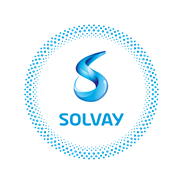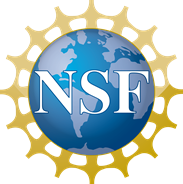
Symposium Supporters
2023 MRS Fall Meeting & Exhibit
Meeting Chairs

Derya Baran
King Abdullah University of Science and Technology
Derya Baran is a an associate professor in the Materials Science and Engineering Division at the King Abdullah University of Science and Technology (KAUST). Her research group, OMEGA Laboratory, is engaged in engineering organic and hybrid materials for energy harvesting devices. She received her doctorate degree from Friedrich-Alexander Erlangen-Nürnberg University in Materials Science and Engineering in 2014. Upon graduation, Baran was awarded the Helmholtz Association postdoctoral grant and had a joint research between Julich Research Center and Imperial College London from 2015 to 2016, before joining the faculty at KAUST in 2017. She is CEngO of Red Sea Farms, an innovation and technology-led A griTech company based in Saudi Arabia. She has pioneered advances within novel energy harvesting materials for use in applications in desert agriculture, helping to solve the globally important topic of sustainable food security by creating transparent and heat-blocking solar panels. In 2021 she was named to the Talented 12 list by Chemistry and Engineering News journal C&EN, and in 2020 was a member for Global Young Academy. Baran was one of MIT Technology Review’s 35 Innovators Under 35 in 2018 for her work in the field of photovoltaics. Baran has worked as an organizer for several conferences, including Materials Research Society and SPIE, among others, and holds several editorial and advisory board roles in various scientific journals. She strives to be a role model with her research and a voice and inspiration to young scientists globally.

Alexandra Boltasseva
Purdue University
Alexandra Boltasseva is a Ron and Dotty Garvin Tonjes Professor of Electrical and Computer Engineering with a courtesy appointment in Materials Engineering at Purdue University. She received her PhD degree in electrical engineering at the Technical University of Denmark in 2004. Boltasseva specializes in nanophotonics, quantum photonics, nanofabrication and optical materials. She is a 2018 Blavatnik National Award for Young Scientists Finalist and received the 2013 Institute for Electrical and Electronics Engineers Photonics Society Young Investigator Award, the 2013 Materials Research Society Outstanding Young Investigator Award, the 2011 MIT Technology Review Top Young Innovator, the Young Researcher Award in Advanced Optical Technologies from the University of Erlangen-Nuremberg, Germany (2009), and the Young Elite-Researcher Award from the Danish Council for Independent Research (2008). She is a Fellow of the National Academy of Inventors, the Optical Society of America, and International Society for Optical Engineers. She served on the MRS Board of Directors (2014-16) and was Editor-in-Chief for OSA’s Optical Materials Express journal (2016-21).

Julien Pernot
University of Grenoble Alpes
Julien Pernot is a professor in the Department of Physics and Engineering at the University of Grenoble Alpes. His group at the NEEL Institute/CNRS is engaged in fundamental and applied research on wide band gap (SiC, GaN and ZnO) and ultra-wide band (diamond, AlN and Ga2O3) semiconductors. His research focuses on advanced electrical characterization tools and microscopic methods for the study of bulk materials, thin films, micro- and nanowires in order to propose innovative devices in the field of power electronics, light emitting diodes and detectors. Pernot was awarded the Institut Universitaire de France in 2012 and the André Blondel medal in 2019. He is involved in the organization of several international diamond conferences and workshops, including the International Conference on Diamond and Carbon Materials, the Hasselt Diamond Workshop, the Franco-Japanese workshops on diamond for power electronics, and served as symposium organizer at three MRS Spring Meetings. He is also co-founder of DAIMFAB, a start-up company that utilizes some of the patents he has filed.

Kristofer Reyes
University at Buffalo
Kristofer G. Reyes is an assistant professor in the Department of Materials Design and Innovation at the University at Buffalo, and holds a joint appointment as an applied mathematician at Brookhaven National Laboratory. He develops machine learning and artificial intelligence methods for problems in materials science. Reyes is particularly interested in making these methods relevant in the regime of sparse and noisy data – a regime in which much of materials science research is conducted. A major thrust of his work is autonomous science, which uses robot scientists to plan and execute experiments, and scientific machine learning to posit hypotheses. In this area, Reyes develops methods for designing optimal experiments based on a limited set of information, algorithms for the characterization of rich and complex data resulting from experiments, and techniques for learning and leveraging physics-based and domain-expert knowledge. He received his PhD degree in applied mathematics from the University of Michigan, where he modeled the synthesis of nanostructures grown by multiphase methods. Reyes’ postdoctoral training was at the Department of Operations Research and Financial Engineering at Princeton University. It was there that he developed and applied sequential Bayesian experimental design methods for problems in materials science, chemistry and physics.

Jonathan Rivnay
Northwestern University
Jonathan Rivnay is a professor of biomedical engineering at Northwestern University. He earned his BS degree from Cornell University in 2006 and then moved to Stanford University where he earned MS and PhD degrees in Materials Science and Engineering studying the structure and electronic transport properties of organic electronic materials. In 2012, he joined the Department of Bioelectronics at the Ecole des Mines de Saint-Etienne in France as a Marie Curie post-doctoral fellow, working on conducting polymer-based devices for bioelectronics. Rivnay spent 2015-16 as a member of the research staff in the Printed Electronics group at the Palo Alto Research Center before joining the Department of Biomedical Engineering at Northwestern University in 2017. He is a recipient of an NSF CAREER award, ONR Young Investigator award, and has been named an Alfred P. Sloan Research Fellow and MRS Outstanding Early Career Investigator.




-2.tmb-mtg_rel_ad.png?Culture=en&sfvrsn=a4240c09_1)

























